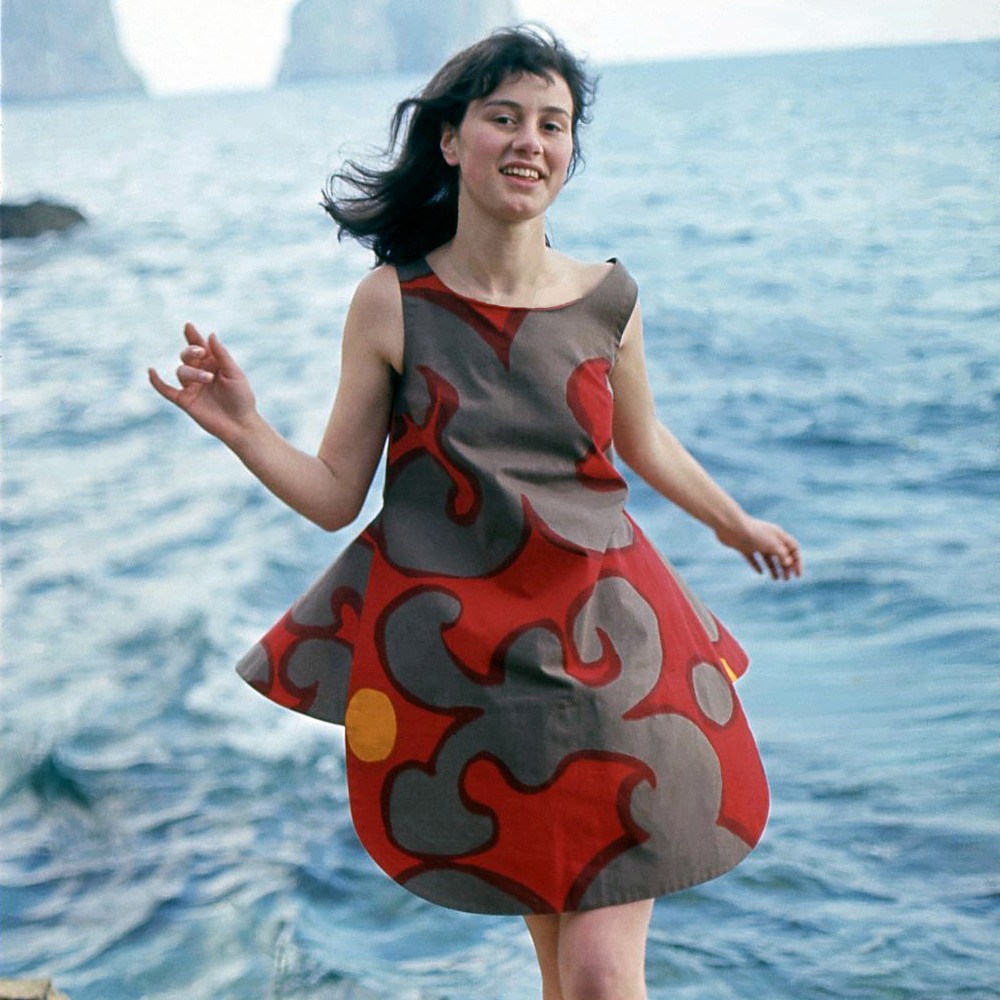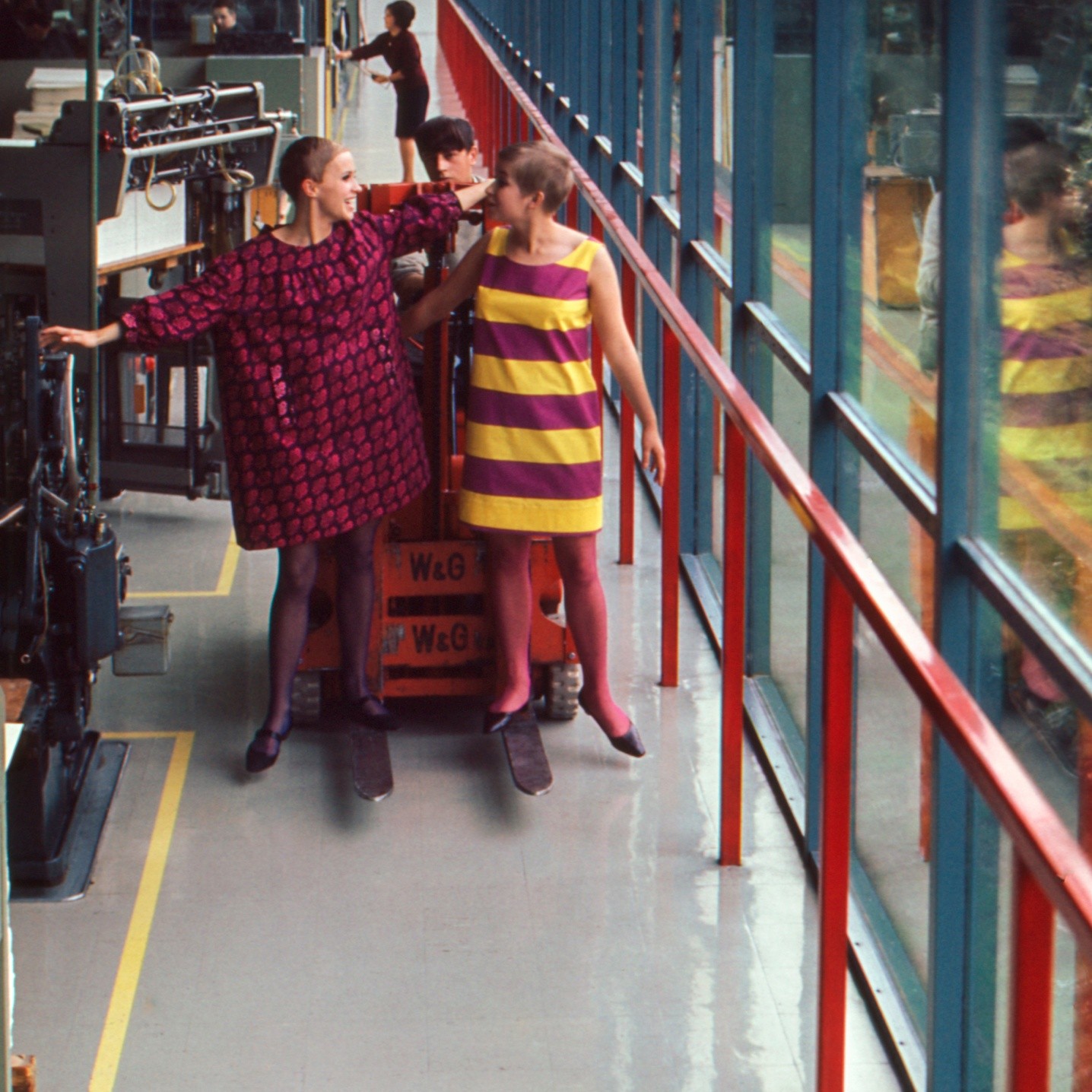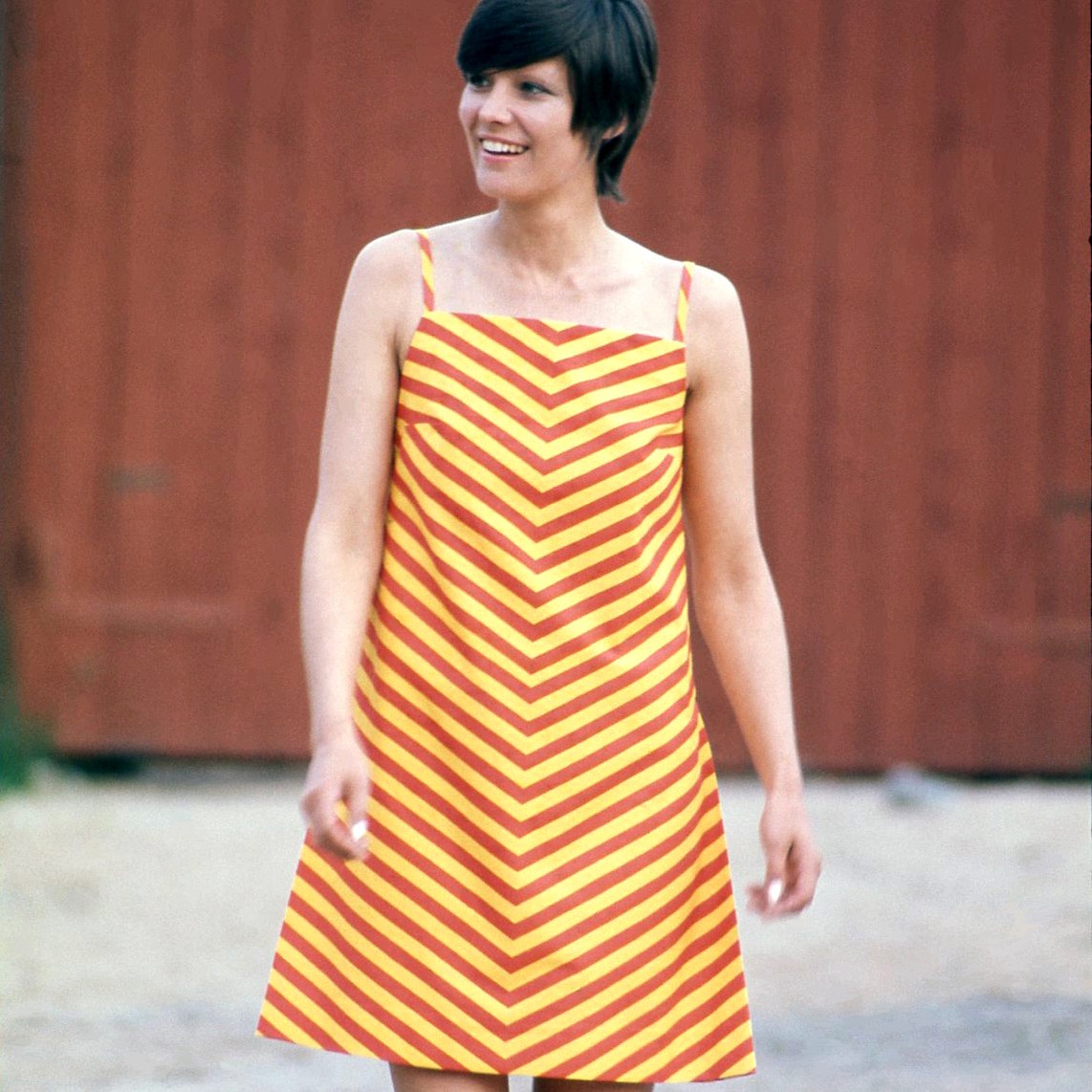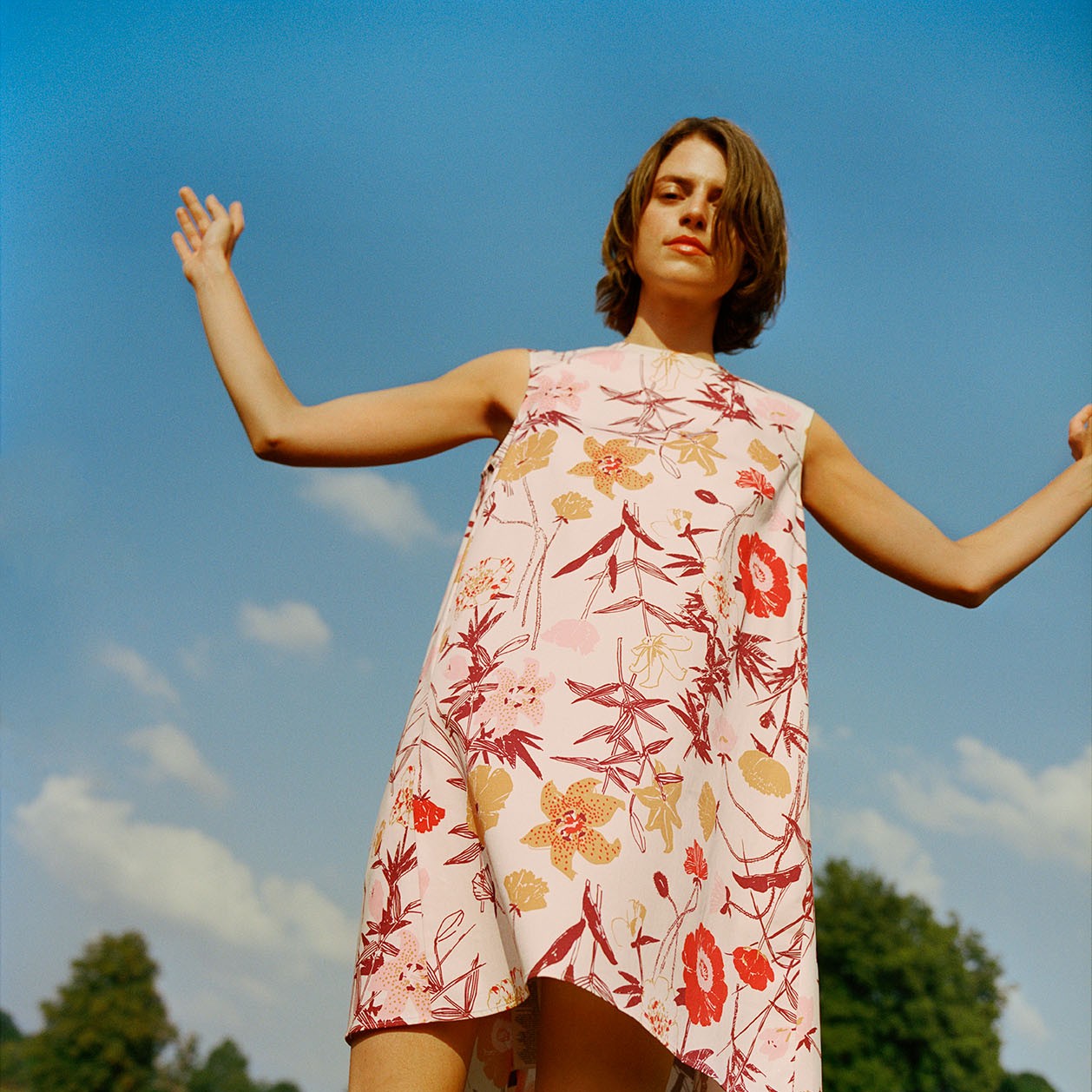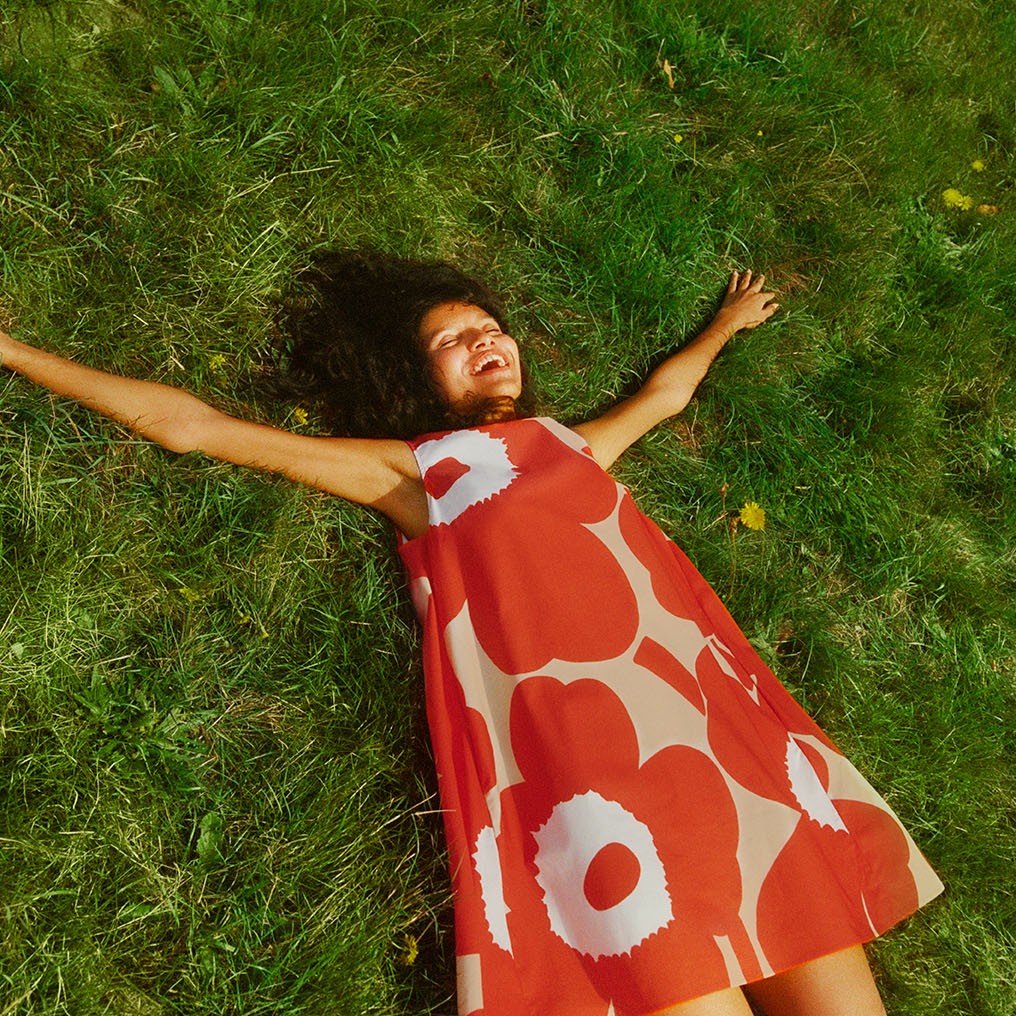Enduring icon: The Marimekko Marimini dress
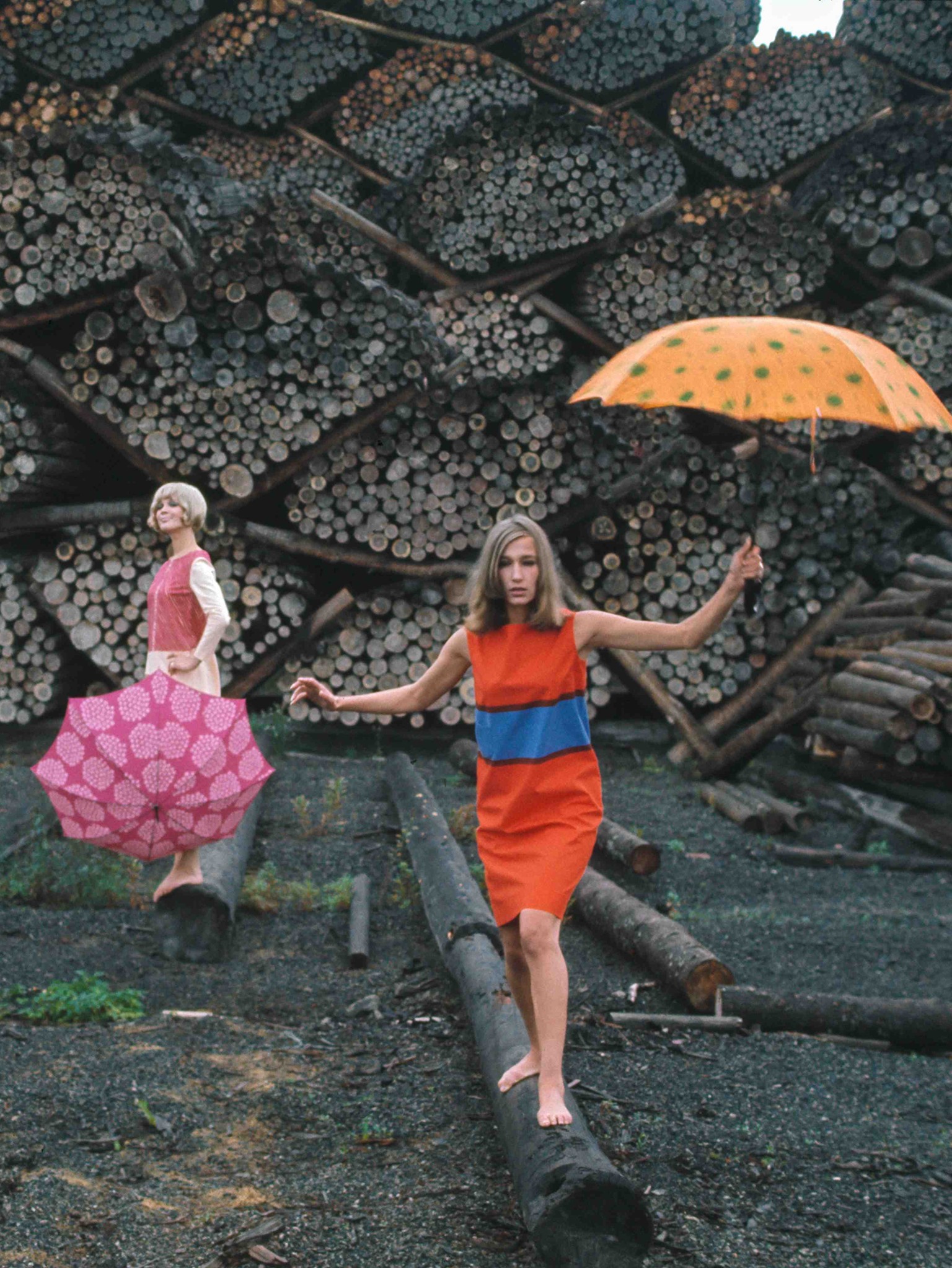
Some dresses make a statement; Marimekko Marimini joined a conversation that's lasted over 60 years. Since day one, this mini dress has epitomized the joy, movement and confidence Marimekko stands for, worn by everyone from Jacqueline Kennedy to the women behind Tony Vaccaro’s lens for Life magazine. So, what makes the Marimekko Marimini dress an icon?
Marimini springs from a rich history of dress shapes and prints that drum home Marimekko’s philosophy. Since 1951, we’ve championed a joyful way of life, designing clothes, homeware and accessories that help you look, move and feel your most positive. Finnish designer Annika Rimala, who created Marimekko’s beloved Tasaraita striped collection, put it simply: "Clothes needed to be designed so that it was possible to move freely in them – to run, jump and sit” and, might we add, dance. Sixty odd years on, the statement sticks. Who wouldn’t want a dress you bike to work in, run errands, unwind at home, then light up a room come nightfall—without really feeling like you’re wearing it at all?
The style that defined an era
In the early 1960s, Marimekko Marimini joined the global mini dress phenomenon. It was distinguishable because of its A-line cut, sleeveless design, relaxed fit and timeless prints. Functional and fun. As hems rose across Europe, the trend quickly crossed the Atlantic.
In 1960, while her husband formally launched his U.S. presidential campaign, Jacqueline Kennedy shaped the public image that would define her as First Lady. Her image was characterized by sophistication, cultural refinement and an understated elegance. She was known for her appreciation of French designers, but she also embraced more approachable and practical styles that brought joy and ease to everyday dressing, and resonated with the American public. At Design Research (D/R, as it was commonly known), a boutique in Cambridge, Massachusetts, she found such pieces. The colors were bold, the cuts relaxed and each style was refreshingly uplifting. Jackie bought at least 7 dresses, all Marimekko. Pregnant at the time, she favored these comfortable, versatile dress types for informal, everyday moments. They reflected a democratic approach to fashion that aligned with our ethos of creating clothing for all shapes and lifestyles.
Since then, few Marimini elements have changed. The 1980s embraced classic short hems and loose shapes. The 1990s introduced fabulous woolen jersey versions in monochromatic hues. The 2000s saw a boom in bold prints, propelled by the popularity of the Unikko pattern, while the 2010s experimented with cocoon silhouettes alongside the archetype A-line.
Timeless, yet timely
Today, the Marimekko Marimini dress stays true to its roots. Relaxed cut, timeless prints and breathable fabric. It’s a dress designed to endure, preserving the optimistic spirit that defined Marimekko from the beginning. With the resurgence of the mini dress, Marimini has, once again, reclaimed its place as a wardrobe staple.
In the Spring/Summer 2025 collection, Marimekko Marimini dresses feature both classic and contemporary floral prints. The lineup features the vibrant Perenna by Fujiwo Ishimoto, the summery charm of Suvikimppu by Lotta Maija, and the timeless appeal of Maija Isola’s iconic Unikko. Select dresses are crafted using the full width of the printed fabric, meaning each piece becomes a one-of-a-kind creation while minimizing production waste.
Throw it on bare-legged, with tights or layered over pants—it instantly becomes a look that lifts your mood. Light yet striking, it’s so deliciously free-flowing that it feels like slipping into a second skin; an extension of your personality. But this? This is just the opening act. Wait until you see what Marimini does next.
